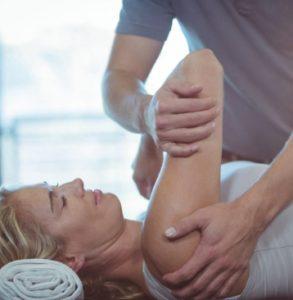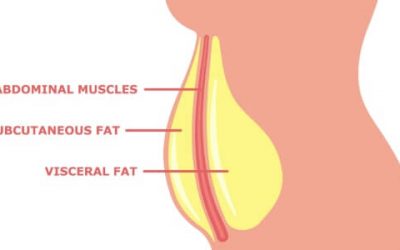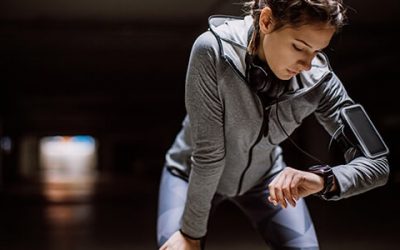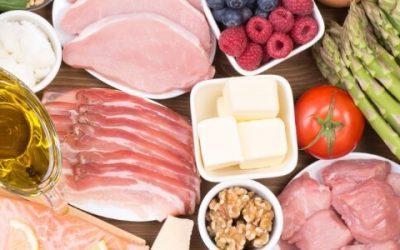There is a very particular kind of soreness associated with exercise that is probably familiar to most people reading this. It is not the kind of pain that indicates an injury – it is a deep ache that, at its most extreme, can reduce the hardiest of trainees to a hobbling, groaning mess!
This kind of post-exercise discomfort is known as DOMS (Delayed Onset Muscle Soreness). The important word to note is “delayed”, as it will take about a day to appear and usually peaks at about 48 hours after training. DOMS can be anything from very light sensitivity and tightness in the muscles, to muscles so sore that normal day-to-day activities are difficult to perform. There will also usually be a sensation of tightness and often a decrease in range of motion in the affected areas. This is obviously all temporary but it can be debilitating.
(We should be clear that what we are discussing is not an injury, it is a response of the body to a strong physical stimulus. If you suspect you have been injured while training you should contact a healthcare professional. )

What causes it?
It’s important to note that scientists are not in complete agreement about the exact causes of DOMS, but the majority believe that it happens as a result of microscopic damage (tears) to the muscle fibre as a result of exercise. Certain types of exercise are found to cause worse DOMS , for example eccentric training (the slow lowering of a weight) but the most important element to be considered when talking about post-training muscle soreness is the “shock factor”.
DOMS is always worst when we do something different than what we are accustomed to. It could be a different amount of volume (if you are used to doing 3 sets of 5 reps for squats and one day you do 5 sets of 10 reps, you are probably going to be sore!), a greater load, greater frequency, greater effort, or an exercise or activity you have not done before or for a long time.
It is extremely important to note that being sore is NOT a sign of a good workout. It is a symptom of shock to the body. There is nothing wrong with soreness after training but it would be a huge mistake to think that a lack of soreness means you haven’t worked hard. In my experience most high-level trainees and athletes do not tend to experience much DOMS, at least most of the time, because their training is properly planned and managed to the extent that changes and progressions are introduced gradually.
*A quick note on a pet peeve of mine: post-training muscle soreness is not caused by “lactic acid”. Lactic Acid doesn’t even exist in the human body, but what most people think of as “lactic acid” (the burning sensation in the muscles which is a sign of elevated levels of blood lactate during intense exercise) only lasts a few minutes and cannot be the cause of soreness that occurs days later! *
How can it be avoided?
As noted, the best way not to be crippled by DOMS is to avoid any extreme jumps in exercise volume (such as bounding out of bed on the 1st of January and doing a 20km run after a six-week layoff!) or exercise selection/ new activities. If you are introducing something new to your training regime, do it gradually. Any competent trainer or coach will take a trainee’s training history into account when taking on new clients, and while some mild soreness is to be expected for newcomers to exercise, if someone was constantly crippled with soreness from working with a new coach I would advise them to speak up.
Studies show that there are also things you can do immediately after training that should decrease the chances of DOMS appearing later. These include massage and foam rolling, contrast baths (hot/cold water imersion) and even cryotherapy. A common theme here appears to be how activities that promote blood flow to the area, performed just after a training session, seem to result in being less sore later. Research also tells us that stretching after exercise seems to make no difference to how sore your muscles will be later (although there is some evidence that a proper dynamic warm-up before training may result in being less sore afterward).

What will make it go away?
Once DOMS has actually hit, there are fewer options, but there are still things you can do to get through it quicker. My own favourite method is known as Active Recovery, which basically means doing something (anything!) that gets you moving in order to help your poor aching muscles on the way to a speedier recovery. Anything from a walk, to pushing or pulling a weighted sled, or even a light workout in the gym will help. It won’t be fun at the time but movement has been proven to increase blood flow and to aid recovery, and being active will actually promote recovery from soreness more quickly than if you rested completely.
Stretching doesn’t seem to help, and foam rolling appears to only temporarily alleviate the issue (in studies, the soreness usually returns in less than an hour after foam rolling, and frankly, foam rolling muscles that are very sore from DOMS will be extremely uncomfortable!). Contrast immersion (hot then cold water) may be of some help, but the evidence definitely points to movement-based recovery once soreness has hit you.
Hopefully this all helps to throw some light on something that has affected almost all of us at some stage of our training career!


